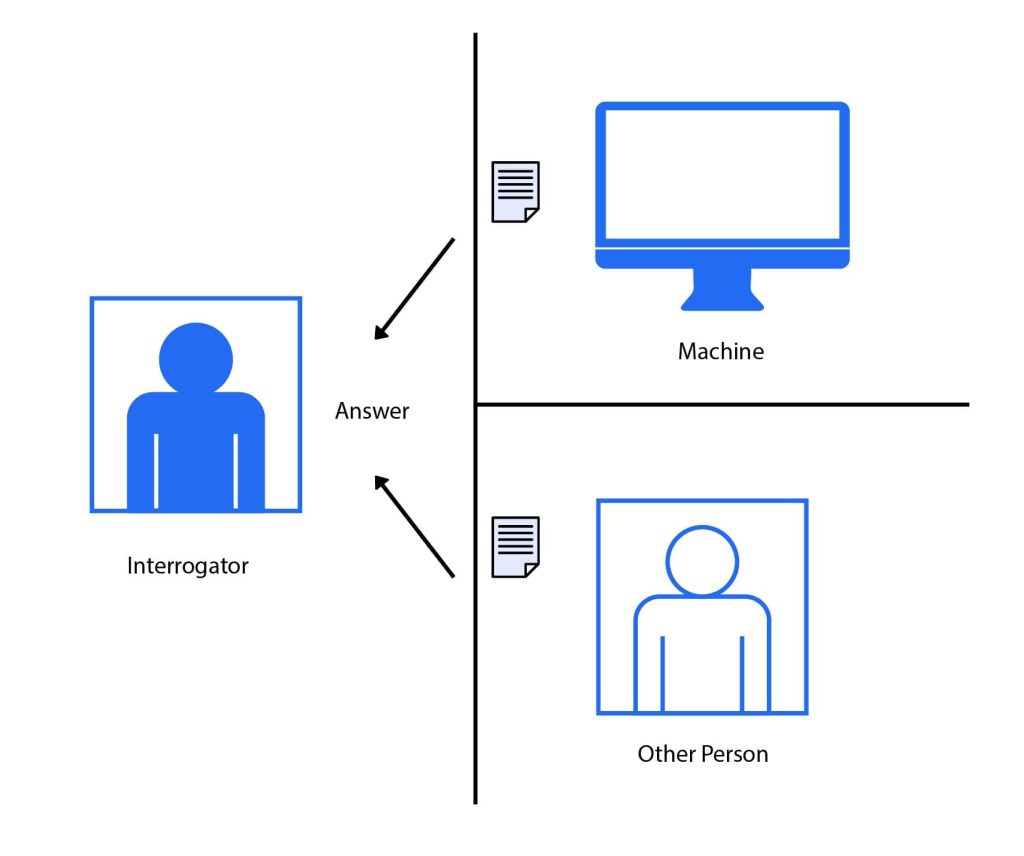The Turing Test stands out as a true icon in the exciting world of artificial intelligence. It’s a concept of a renowned British mathematician and computer scientist, Alan Turing, revealed in 1950. This idea, which has evolved and faced criticism over the years, is a cornerstone in the evaluation of AI capabilities. In this blog we’ll take a fresh look at this fascinating procedure and explore its history. The various adaptations it has seen, its modern relevance, and the pros and cons it brings to the table.
The Turing Test: A Quick Overview
Alan Turing’s creative concept aimed to answer a profound question: Can a machine exhibit human-like intelligence? The Turing Test to be performed requires typically three key roles: a human, a computer, and another human as interrogator. The interrogator’s work is to engage in conversations with the other two participants. The ultimate challenge is straightforward: the interrogator must distinguish who’s the human and who’s the computer. If the interrogator consistently fails to distinguish the computer from the human, then the computer is said to possess artificial intelligence.

Variations and Alternatives
The original Turing Test has seen some creative variations and alternative tests over the years to address its limitations. Some of variations and alternative test are listed and briefly explained below:
- Advertisement -
- Reverse Turing Test: A scenario where a human tries to convince a computer that they’re not a machine. This is often used in those pesky CAPTCHAs.
- Total Turing Test: This version goes beyond mere conversation. It evaluates perceptual abilities and object manipulation, making it more comprehensive.
- Minimum Intelligent Signal Test: Simplifying things, this test only uses true/false and yes/no questions.
- Alternative Tests: A variety of alternative tests have emerged to overcome the shortcomings of the original Test such as the Marcus Test, the Lovelace Test 2.0 and the Winograd Schema Challenge.
The Turing Test Today
The Turing Test in its various forms continues to play a vital role in assessing AI’s capabilities. For example, The Loebner Prize, an award established in 1990 recognizes the most human-like computer program based on the original Test rules. In 2014, a chatbot named Eugene Goostman made headlines for allegedly passing the Turing Test, although this achievement faced criticism for several reasons.
In 2018, Google Duplex showcased AI’s conversational prowess by successfully making a hairdressing appointment over the phone without the receptionist realizing they were conversing with a machine. Some consider this a modern-day Turing Test success, even if it didn’t adhere strictly to Alan Turing’s original format.
One of the latest stars in the AI realm GPT-3, developed by OpenAI is considered a strong contender for passing the Turing Test. However, it’s not immune to criticism as it can sometimes produce nonsensical responses in certain situations.
The Pros and Cons
Like any concept, the Turing Test has its advantages and disadvantages:
Advantages:
- Evaluating Machine Intelligence: It provides a simple and well-known method for assessing machine intelligence.
- Setting a Benchmark: It has served as a benchmark for AI research, inspiring researchers to aim for human-like AI.
- Inspiring Research: the test has ignited numerous studies and experiments aimed at developing machines that can pass it, driving AI progress.
- Simplicity: Administering this test is relatively straightforward, requiring only a computer and a human judge.
Disadvantages:
- Limited Scope: The Test primarily focuses on language-based conversations, often overlooking other critical aspects of intelligence like perception, problem-solving, and decision-making.
- Human Bias: The results can be influenced by the preferences and biases of human judges, making it challenging to achieve true objectivity.
- Not Representative: The test may not accurately represent the kind of intelligence machines need to demonstrate in real-world applications.
The Turing Test, unveiled more than seven decades ago, remains an essential pillar in the realm of artificial intelligence. It continues to serve as a foundation for evaluating AI capabilities and has been evolving over the years even while facing criticisms. As we continue our journey through the ever-evolving field of AI and strive to comprehend the complexities of human-like thinking. The Turing Test remains a critical reference in the ongoing discussion about what truly defines a thinking machine.


